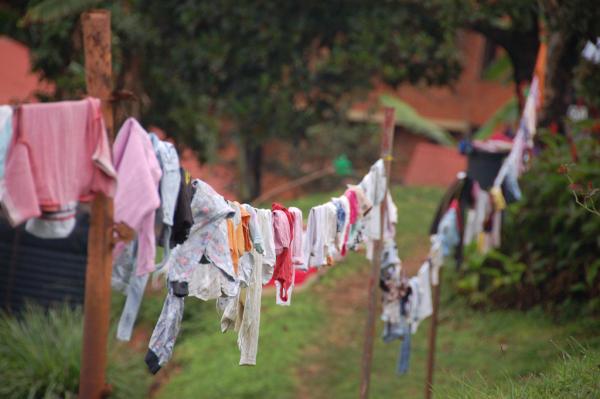Coming out of the austere Mauritanian desert at the Mauritanian-Senegalese border town of Diama, it was a mere 32 kilometres to our next destination, Saint Louis. Having spent the past couple of weeks living off sardines and bread and camping in the desolate beauty of the Sahara, we dreamt of a town fabled for its vibrancy and all round "good time" feel.
It was not to disappoint. In fact, we had arrived at precisely the same time as the internationally renowned Saint Louis Jazz Festival, and as we rolled into town the ambiance—just like our spirits—was high.
Taking form in the '90s, the festival has seen acts such as Herbie Hancock and Pharoah Sanders, as well as provided a platform for local Senegalese and African musicians. The bill—which mixes traditional occidental jazz groups with African artists—reflects the syncretic forms of music coming from Senegal and beyond, as they usually embody some sort of melange between traditional sound and rhythm and borrowed international groove.
The highlights this year were the Cuban Omar Sosa and the American Marcus Miller, but also Senegalese artists such as Cheikh Lo and Cheikh Tidiane Fall. These guys were masters of their game and their music captivated and even made a slightly sedate jazz crowd dance. What is interesting about them (and what is immediately obvious to a visitor to the country) is that in Senegal, faith and music are inextricably linked and the combination creates a truly distinct and intoxicating sound. One of the main art forms is called "Mbalax," meaning "rhythm" in Wolof (and although not directly attributed to Cheikh Lo, but more the prolific Youssou N’dour) it has heavy spiritual and traditional undertones and again fuses traditional drumming (sabar) with jazz, soul and Latin.
The rhythms of Mbalax are heady and quick (listen to Youssou N’dour - Ba Tay) but understanding what makes artists such as Lo and N’dour craft their art, is key to understanding both the music and by extrapolation the Senegalese mind frame in general. Almost everywhere you go in Senegal you will see the words "Bamba" and "Touba" along with the image of a tall man shrouded in a white kaftan (or mbubb). Wonderfully painted on the taxis, used for commerce ("touba boutique"), a type of coffee ("coffee touba") or used in song ("Youssou N’dour - Shukran Bamba") the symbolism is ubiquitous and makes reference to a form of Islam found predominantly in Senegal known as Mouridism.
Mouridism is a form of Sufi Islam, which in classic Sufi style errs away from scripture-based theology and instead focuses on a more spiritual and individual pathway to God. Rather like Hinduism, key to this spiritual journey are practices like repetition chanting, music and dance and following mystical spiritual guides known as marabouts. All in all, it makes for a very publicly exuberant belief system, and probably would be an interesting point of contrast to those that believe that Islam is a religion reserved solely for atavistic anti-liberal fundamentalists.
In perhaps a very African way, Senegalese Islam is more about expression and celebration rather than fear of God and scripture-based piousness. All the symbolism in song and public space mentioned above is about celebrating faith. The white-robed figure is the legendary Amadou Bamba—the founder of the Mourides, who in the late 1800s laid out the basic principles and founded a holy city north of Dakar called Touba. His teachings were hard work, spiritual progression, and peace—and many important Senegalese figures such as Lo, N’Dour and Abdoulaye Wade (the ex-president) all call themselves Mourides. Similarly followers of Bamba often see the city of Touba as more spiritually important than Mecca and stories of this revered character ripple around Senegambia up to this day.
In fact, I was lucky enough to hear one of these legends myself. One afternoon after having spent far too much time cycling around looking for an English bookshop, we stopped for a coffee Touba underneath the shadow of Dakar’s powerful statue, Le Monument de la Renaissance Africaine. After finding a vendor, we sat down and enjoyed the fragrant taste of the coffee (think of black coffee mixed with mulled wine and touba is somewhere in between—it’s surprisingly delicious). Soon enough we got chatting to a man named Aliou who was waiting for a bus. Aliou wanted to know why we were so sweaty and red-faced (our English genes letting us down once again). As the conversation evolved he started telling us more of who he was, the fact that he was Mouride, and even recounted a legend about the great Amadou Bamba.
As Aliou told it (excuse the poor translation):
“A while back when Bamba was in his height, the French, who didn’t like Bamba, thought he was going to oppose them and came and took him away. They put him on a ship, put him in irons and sent him to Gabon. Bamba was a very devout and dedicated man. He would always do his daily prayers. One day, while trying to pray, the French captain forbade him. But Bamba had to pray! And so, with a loud crash, he broke the chains that held him captive, and jumped overboard. The French thought he would surely drown. But, rushing to the side, instead they saw Bamba sat calmly on a prayer mat that had appeared out of nowhere. And so, Bamba could pray.”
Aliou told the story with great enthusiasm, and reading it on paper perhaps does it little justice. After Aliou had gone we were left revelling in the story and still a little red-faced, looking up at the statue. The statute soars above Dakar’s high-line and shows a man in an Islamic head piece holding a baby and his wife, looking and pointing triumphantly to the sky and to the future. The image is powerful and it occurred to me that the name "African renaissance" indeed accurately translates what is happening in Senegalese music, Senegalese symbolism, and in Senegal in general.
The religious and traditional elements of culture that could have perhaps hindered other countries from change, have instead been harnessed and appropriated by the youth and the music makers, in order to push society forward in an inclusive and cohesive manner. Religious culture has been reworked into popular culture, and with big names such as N’dour and Lo leading the way it seems that the African Renaissance monument is not merely an idealistic metaphor, but a reality.
Add this article to your reading list



